Vikas Sharma
Robust Linear Hybrid Beamforming Designs Relying on Imperfect CSI in mmWave MIMO IoT Networks
Dec 25, 2022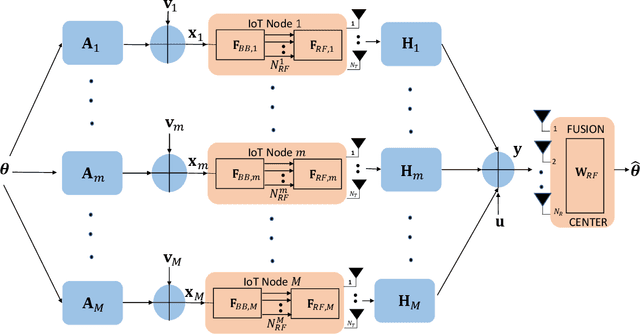
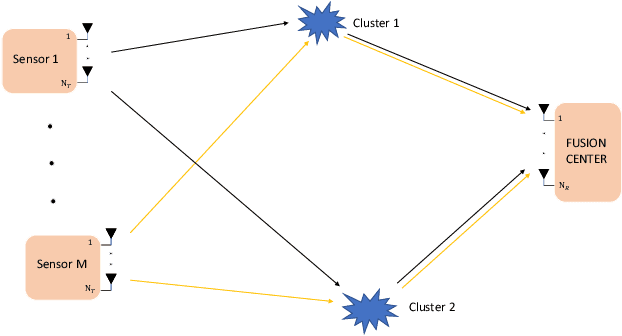
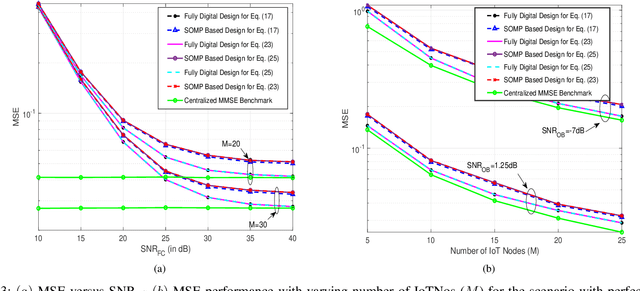
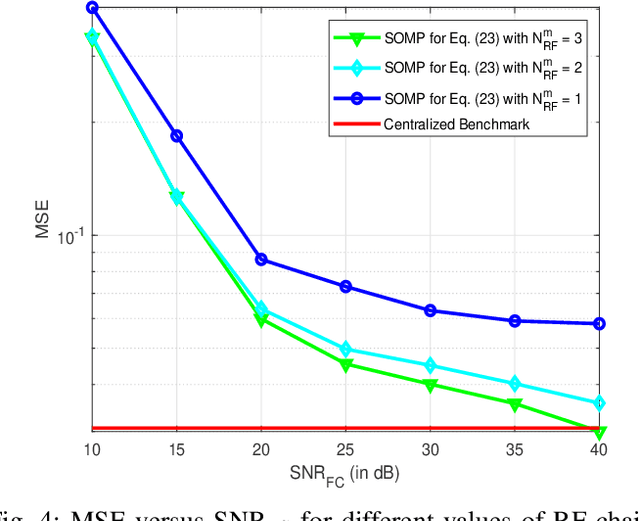
Abstract:Linear hybrid beamformer designs are conceived for the decentralized estimation of a vector parameter in a millimeter wave (mmWave) multiple-input multiple-output (MIMO) Internet of Things network (IoTNe). The proposed designs incorporate both total IoTNe and individual IoTNo power constraints, while also eliminating the need for a baseband receiver combiner at the fusion center (FC). To circumvent the non-convexity of the hybrid beamformer design problem, the proposed approach initially determines the minimum mean square error (MMSE) digital transmit precoder (TPC) weights followed by a simultaneous orthogonal matching pursuit (SOMP)-based framework for obtaining the analog RF and digital baseband TPCs. Robust hybrid beamformers are also derived for the realistic imperfect channel state information (CSI) scenario, utilizing both the stochastic and norm-ball CSI uncertainty frameworks. The centralized MMSE bound derived in this work serves as a lower bound for the estimation performance of the proposed hybrid TPC designs. Finally, our simulation results quantify the benefits of the various designs developed.
Ensemble Sales Forecasting Study in Semiconductor Industry
May 16, 2017



Abstract:Sales forecasting plays a prominent role in business planning and business strategy. The value and importance of advance information is a cornerstone of planning activity, and a well-set forecast goal can guide sale-force more efficiently. In this paper CPU sales forecasting of Intel Corporation, a multinational semiconductor industry, was considered. Past sale, future booking, exchange rates, Gross domestic product (GDP) forecasting, seasonality and other indicators were innovatively incorporated into the quantitative modeling. Benefit from the recent advances in computation power and software development, millions of models built upon multiple regressions, time series analysis, random forest and boosting tree were executed in parallel. The models with smaller validation errors were selected to form the ensemble model. To better capture the distinct characteristics, forecasting models were implemented at lead time and lines of business level. The moving windows validation process automatically selected the models which closely represent current market condition. The weekly cadence forecasting schema allowed the model to response effectively to market fluctuation. Generic variable importance analysis was also developed to increase the model interpretability. Rather than assuming fixed distribution, this non-parametric permutation variable importance analysis provided a general framework across methods to evaluate the variable importance. This variable importance framework can further extend to classification problem by modifying the mean absolute percentage error(MAPE) into misclassify error. Please find the demo code at : https://github.com/qx0731/ensemble_forecast_methods
On Optimizing Human-Machine Task Assignments
Sep 24, 2015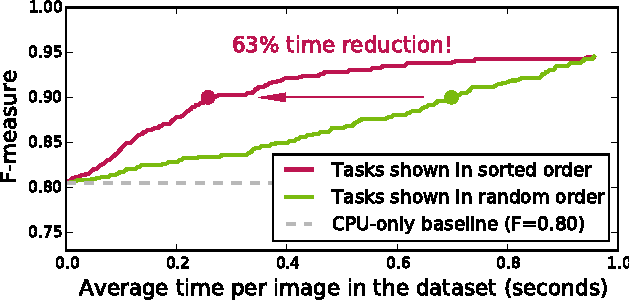
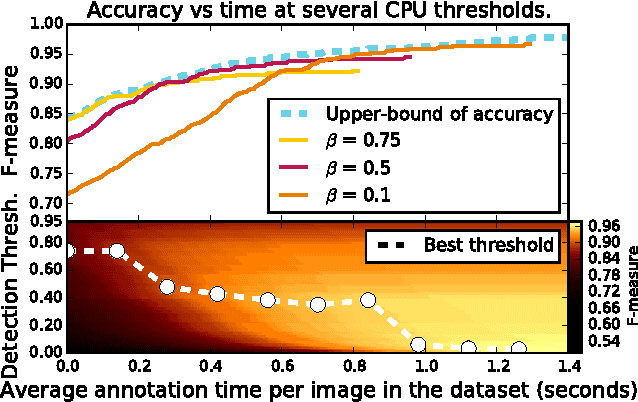
Abstract:When crowdsourcing systems are used in combination with machine inference systems in the real world, they benefit the most when the machine system is deeply integrated with the crowd workers. However, if researchers wish to integrate the crowd with "off-the-shelf" machine classifiers, this deep integration is not always possible. This work explores two strategies to increase accuracy and decrease cost under this setting. First, we show that reordering tasks presented to the human can create a significant accuracy improvement. Further, we show that greedily choosing parameters to maximize machine accuracy is sub-optimal, and joint optimization of the combined system improves performance.
 Add to Chrome
Add to Chrome Add to Firefox
Add to Firefox Add to Edge
Add to Edge